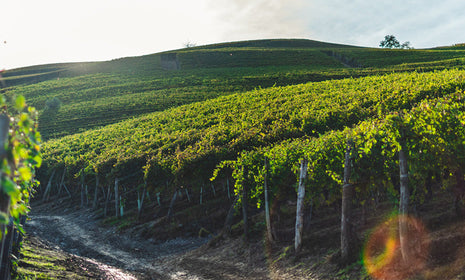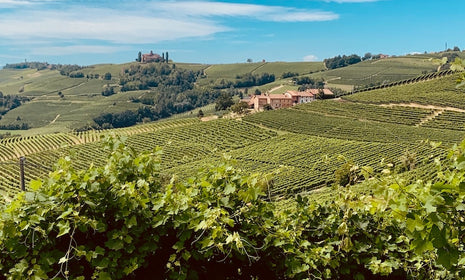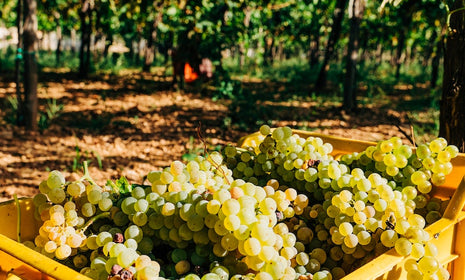Home to Leondardo da Vinci, Dante Alighieri, Niccolò Machiavelli, and many more notable contributors to Italian artistic and linguistic development, Tuscany is often credited with the development of the Italian language and the foundation of Italian high culture and civilization. Revered as the birthplace of the Renaissance, its rolling hills and steep mountainsides are also home to some of Italy’s most iconic scenery and best wineries. With a long stretch of the region meeting the Ligurian Sea to the north and the Tyrrhenian Sea to the south, Tuscany is also a popular beach destination for its many visitors.

First introduced by Etruscan vintners in the 8th century BC, the production of wine became a major commodity for the region during the Medieval Times. By the 14th century, some of the region's most beloved wines were being made, including Chianti, Brunello, Trebbiano, and Vernaccia. Today, Sangiovese grapes climb the rolling hillsides of Chianti, Montalcino, Montepulciano, while the warm ocean breeze and dry climate of the Tuscan coast makes it perfect for cultivating Cabernet Sauvignon grapes.

Reds
As one of Italy’s most prolific wine regions, there are a plethora of wines to delve into. With over half of Tuscany’s hillside vineyards planted with Sangiovese grapes, it’s no surprise that most of the Tuscan red wines that the international community has come to know and love are primarily made with Sangiovese grapes. As a result, we’re taking a deep dive into the varietal and its notable, structured wines that have put Tuscany on the map.
Sangiovese
Dating back to the Roman Empire, Sangiovese grapes have flavored Tuscan wines for centuries. Characterized by its rustic and earthy profile and balanced wild berry body, sangiovese grapes grown in Tuscany are known to be the best in the world. The most prolifically planted wine grape in all of Italy, over half of Tuscany’s hillsides vineyards are planted with Sangiovese grapes.
Chianti
Perhaps the most recognizable wine produced with Sangiovese grapes is the red blend Chianti. Gaining its name from its home, Chianti’s are known for their earth forward yet fruity and peppery characteristics. Their savory flavor profile and acidic finish make it the perfect complement to food, from pizza to salmon and steaks. We recommend trying Rocca delle Macie Chianti Classico Tenuta Sant'Alfonso.
Vino Donbile di Montepulciano
Among Tuscany’s most notable sub-regions is Montepulciano. The picturesque hilly town in southeastern Tuscany is home to highly acclaimed DOCG vineyards that produced what many call “the King of Tuscan wines.” With the dark cherry aromas of a Chianti Classico and rich flavors of a Brunello di Montalcino, the firm tannins and acidity levels make Vino Donbile di Montepulciano’s favorable to aging gracefully. Serve with Bistecca alla Fiorentina.
Brunello di Montalcino
Made from 100% Sangiovese grapes, Brunello di Montalcino is considered to be one of Italy’s finest and most age-worthy wines. Since the 14th century, the DOCG wine has been produced from Sangiovese vines grown just outside of the charming town of Montalcino. With smooth tannins and a ripe black fruit driven character with undertones of vanilla and spice, a high acidity level rounds out the full bodied wine, making it a perfect wine to pair with foods. Serve with grilled game such as deer or even grouse. Due to their renown as excellent cellar wines, Brunello di Montalcino's tend to be on the pricier side. If you're ready to spend more on a delicious bottle, we recommend trying La Serena Brunello di Montalcino Riserva Gemini 2015.

Whites
Despite being predominantly known for its full-bodied and cellar-ready reds, Tuscany is also home to a series of expressive and beautiful white wines. Blessed with a warm Mediterranean climate, hilly landscape, Tuscany delivers prime growing conditions for both red and white grapes.
Vernaccia
An ancient grape variety that is often tied back to ancient Greece, Vernaccia grapes produce characteristically crisp, acidic and citrus forward whites. Perhaps the most recognizable white wine to come out of Tuscany is its only DOCG white wine: Vernaccia di San Gimignano. Dating back to the 13th century, the fresh wine is easy to drink both on its own as well as accompanied by food. The perfect porch sipper to pair with honey baked feta.
Vin Santo
No Tuscan wine guide would be complete without mentioning the “Holy Wine.” Typically made with a blend of Trebbiano and Malvasia grapes, this dessert wine is characterized by its honey, caramel, hazelnut and tropical fruit aromas and flavors. After harvest, the grapes are hung to dry for many months, allowing the sugars to develop further as the grapes slowly break down. They’re then placed in small barrels where they wait for the natural fermentation process to begin. Though the process is long, the result is a viscous and distinctive dessert wine that you won’t quickly forget. We recommend pairing a glass of Vin Santo with a classic almond Cantucci.
With such a rich history and ideal growing conditions, you could spend lifetimes discovering and uncovering the many secrets of Tuscany’s wines. With its stunning landscape, rustic aesthetic, and countless, exceptional wineries to visit, it’s a place you can return to over and over again.
When you purchase a wine using the link provided on this page, we receive a commission.





Be the first to comment